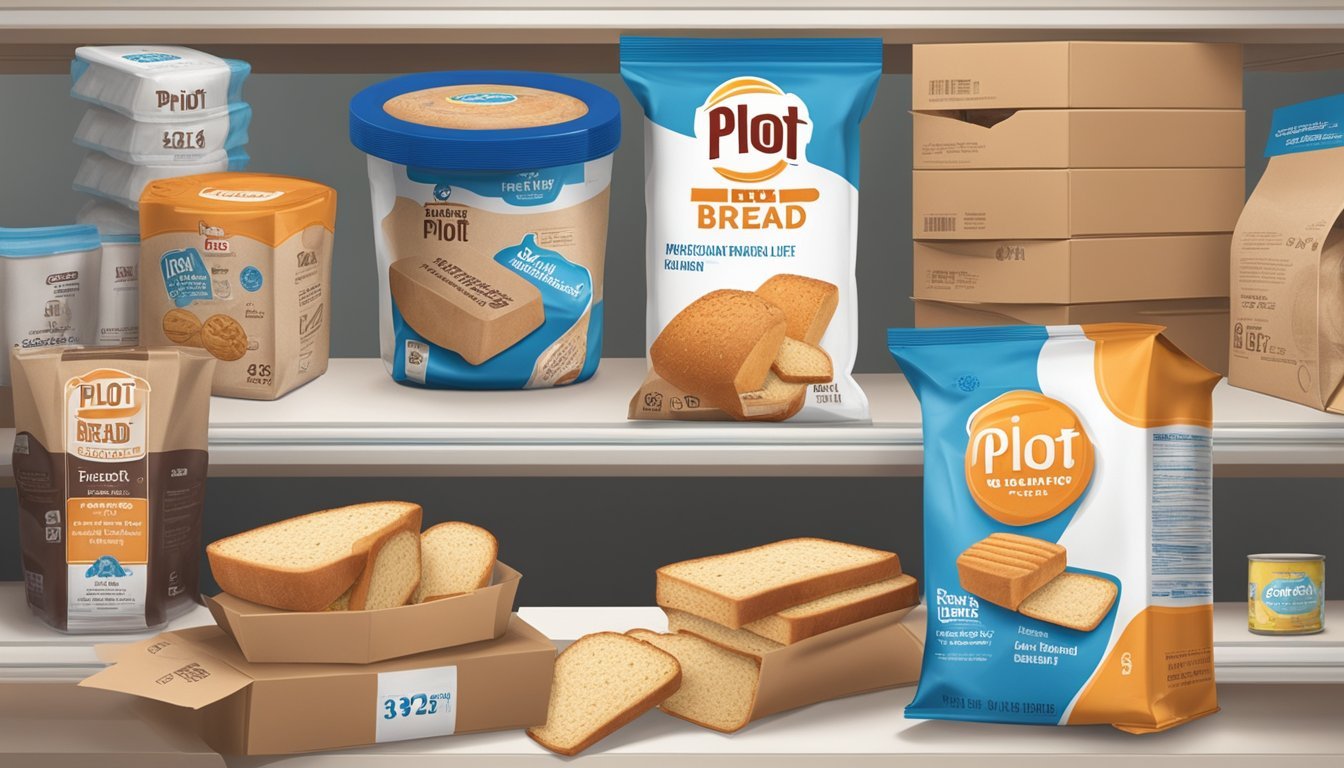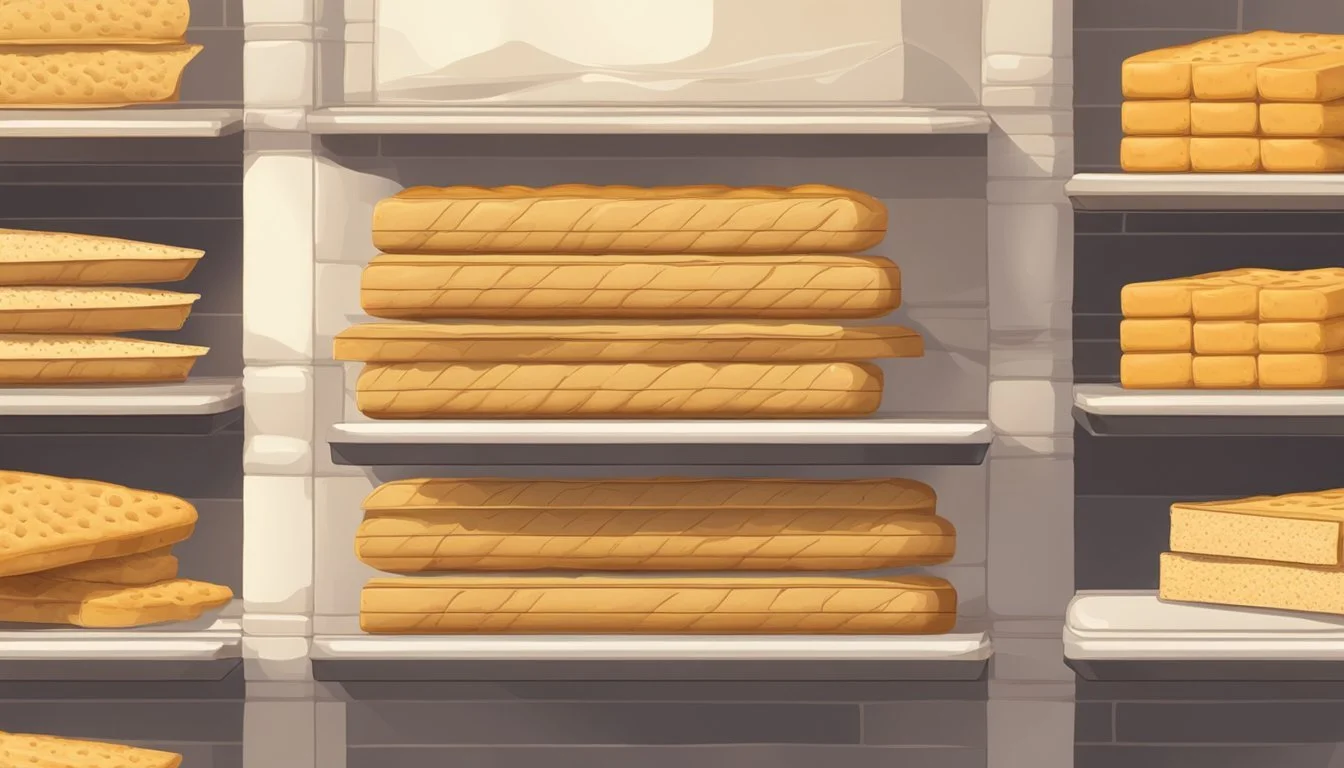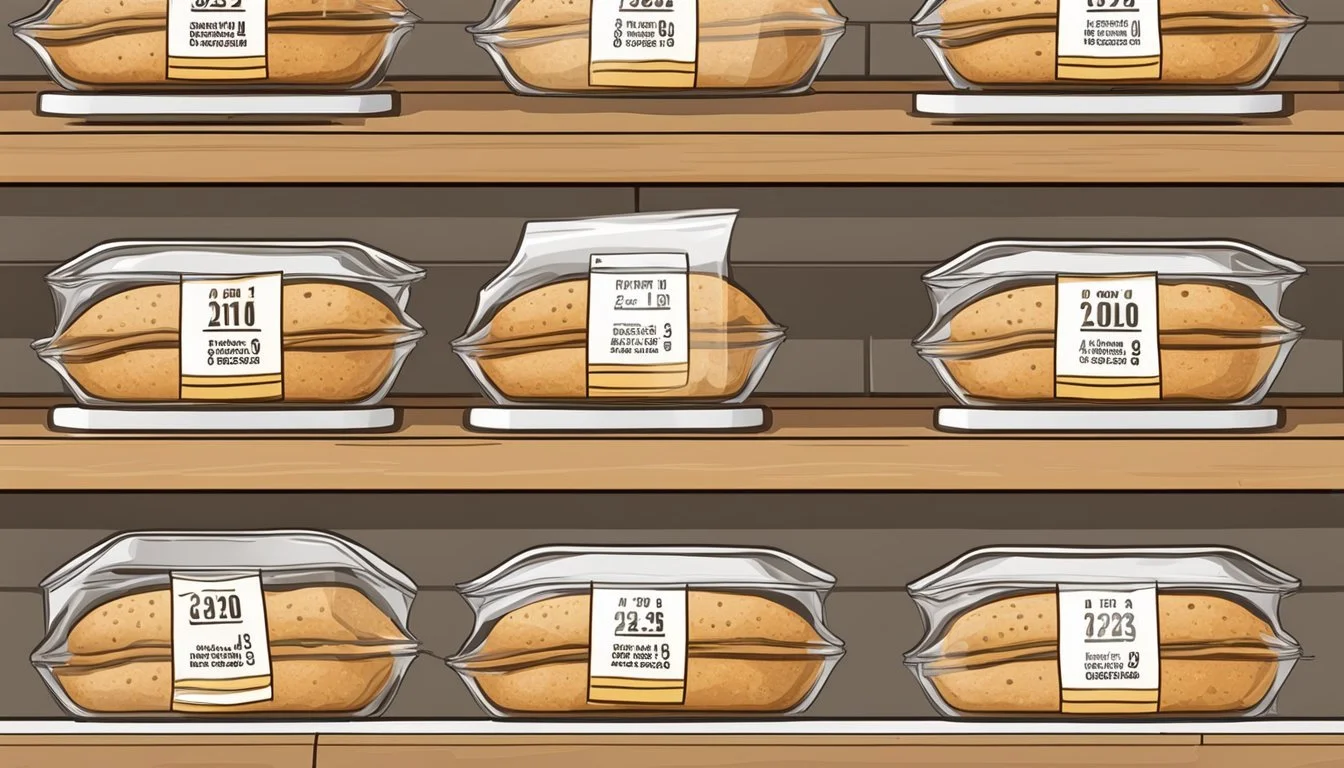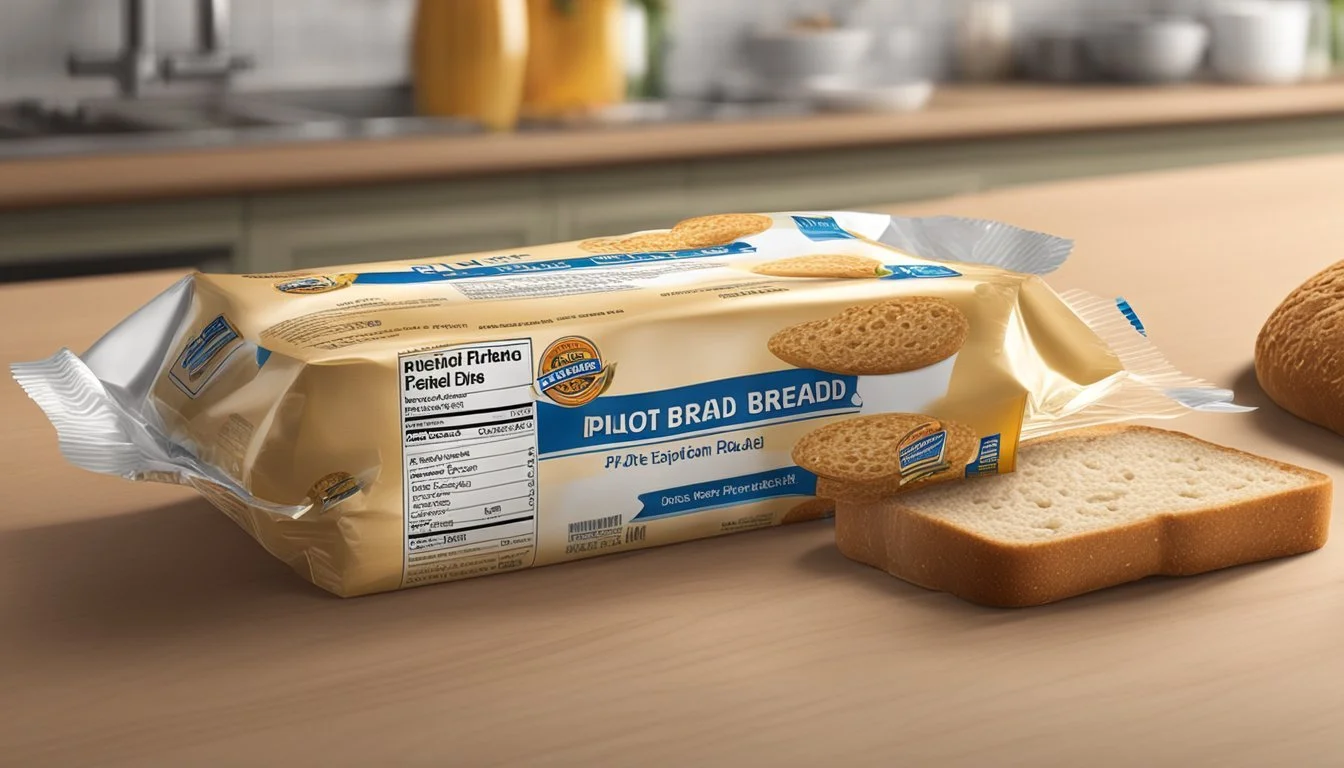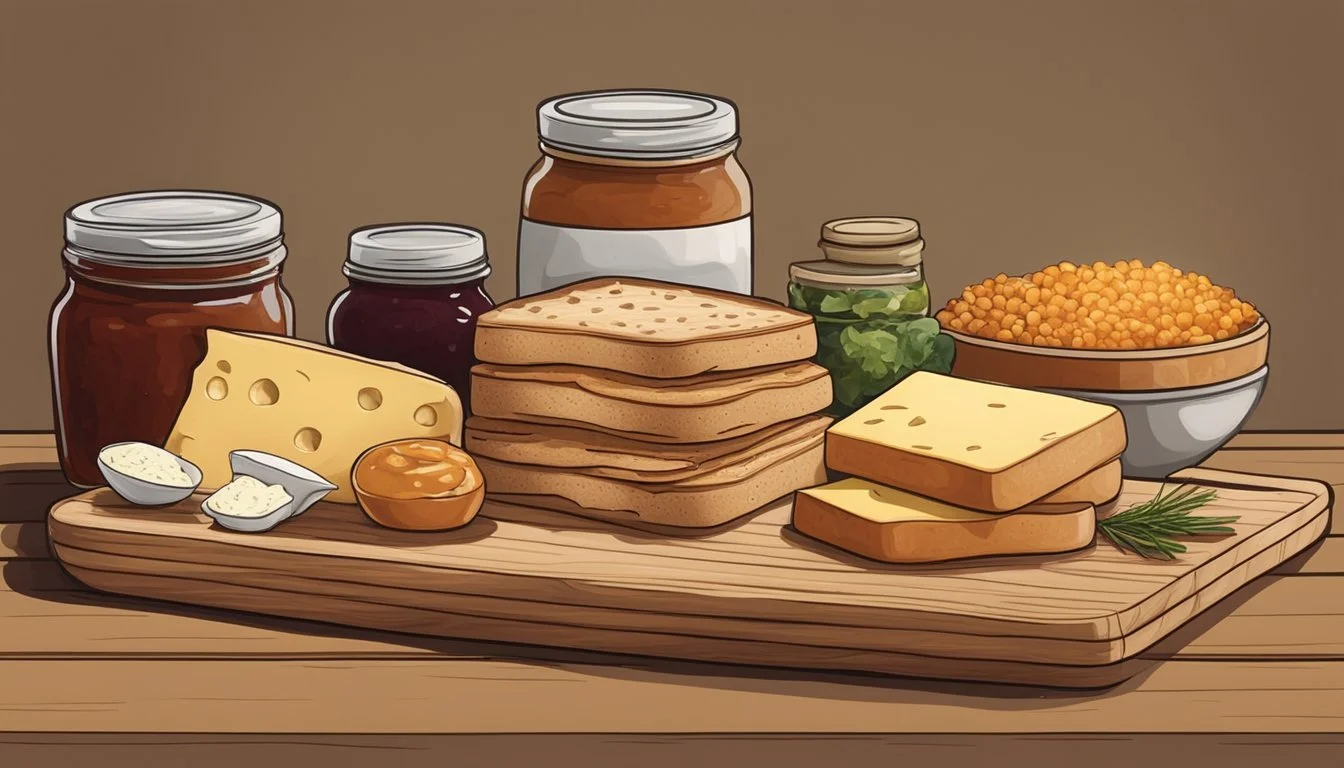How Long Does Pilot Bread Last?
Unveiling Its Shelf Life and Storage Tips
Pilot bread (What wine goes well with bread?), also known as hardtack, has been a reliable source of sustenance for centuries, especially for sailors, soldiers, and explorers. Its popularity can largely be attributed to its exceptionally long shelf life, making it a staple for long journeys where fresh food was scarce. The modern version of pilot bread, sometimes referred to by the brand name Sailor Boy Pilot Bread, retains many of the qualities that made the original hardtack so valuable for survival and long-term storage.
The longevity of pilot bread is a standout feature. When stored properly, it is a survivor's best friend due to its ability to last for decades without spoiling. This is achieved through a simple combination of ingredients and a production process that limits moisture, resulting in a dry and durable cracker. It's not intended to excite the palate, rather to provide a dependable source of calories that can keep indefinitely in stable conditions.
Pilot bread's continued use in emergency preparedness kits and by outdoor enthusiasts attests to its effectiveness as a survival food. While certainly not the centerpiece of a gourmet meal, its practicality lies in its simplicity and the peace of mind from knowing it will be edible when needed, even if that's years or even decades from the time of purchase. This durable foodstuff remains a significant asset for sustaining individuals in situations where other, more perishable food options are not available.
History and Origin
Pilot bread has a storied tradition, strongly associated with its utility in long-lasting food supplies necessary for military campaigns and maritime journeys. This bread type is particularly noted for its role in history and the pivotal parts it played in survival and nutrition when resources were scarce.
Military and Maritime Legacy
Military: Pilot bread, also known as hardtack, has been a staple in military supplies since ancient times, owing to its durability and shelf life. It was a prevalent food source for soldiers during the American Civil War and was known for surviving long periods, especially as long as it was kept dry. The Royal Navy also relied heavily on such rations during their sea voyages, where its longevity was of utmost importance.
Maritime: Sailors frequently consumed pilot bread during long sea voyages, and it was a standard provision in the maritime industry. It’s inexpensive to produce and can last almost indefinitely under proper storage conditions, away from pests and moisture. The bread was particularly crucial for 19th-century sailors, for whom fresh provisions were not always available.
Cultural Significance in Alaska
In Alaska, pilot bread is not just known for its historical role but also for its current cultural significance. It’s a well-entrenched food item in the state, where many communities still depend on non-perishable food items due to the remoteness of the region. Not only does it hark back to its ancestral roots as a military and maritime ration, but it also continues to be a beloved cracker, adapted into various local recipes and food traditions.
Fundamentals of Pilot Bread
Pilot bread, a long-lasting staple, hinges on its simplicity, encompassing basic ingredients and a straightforward baking process that contribute to its durability.
Traditional Ingredients
The core components of pilot bread are minimal, reflecting the essentials of its original recipe.
Ingredients:
Wheat Flour: Acts as the primary structure.
Water: Binds the flour.
Salt: Optional for flavor and preservation.
This combination, lacking perishable additives, underpins the biscuit's longevity.
Baking Process
Pilot bread’s baking method is aimed at extracting moisture to prevent spoilage.
Oven Preparation: Preheating to a temperature usually around 400ºF ensures a consistent baking environment.
Recipe Execution:
Dough Mixture: Flour (and salt, if used) is combined with water until the mixture clumps.
Rolling: The dough is flattened into a thin sheet.
Cutting: Uniform shapes, typically rectangular or circular, are cut.
Baking Time: Varies, but it is long enough to harden the dough, ensuring minimal moisture remains.
This process yields a dense, dry biscuit known for its endurance on long voyages or in storage.
Physical Characteristics
Pilot bread, often referred to as hardtack, is renowned for its simple shape and robust structure. These attributes contribute significantly to its shelf life and resilience.
Shape and Structure
Pilot bread is traditionally fashioned into squares or rectangles to maximize storage efficiency and ease of handling. Its structure is simplistic, with no fillings or layers, contributing to its ability to withstand various conditions without degradation.
Hardness and Durability
Hardtack distinguishes itself by its hardness, a feature integral to its durability. This biscuit is characterized by its dense texture and can often include small holes poked through to prevent puffing during baking. The hardness contributes to the main benefit of pilot bread—the ability to last for extended periods, especially in environments unsuitable for more perishable foods.
Nutritional Information
In examining the nutritional profile of pilot bread, one should focus on its caloric content and health benefits. This food item is designed to be an energy-rich supplement to a diet, primarily through its carbohydrate composition.
Caloric Value
Pilot bread is a high-calorie food that provides a significant amount of energy per serving. This characteristic makes it a suitable option for individuals in need of sustained energy:
Calories: Typically, one serving of pilot bread contains approximately 70 to 100 calories, mainly from carbohydrates.
Health Benefits
While pilot bread is primarily known for its energy-providing carbohydrates, it also offers some nutritional benefits when consumed as part of a balanced diet:
Carbohydrates: It is a significant source of carbohydrates, providing the necessary fuel for physical activities and bodily functions.
Low Fat: Pilot bread is usually low in fat, with minimal amounts of saturated fat, contributing to its nutritional value.
Vitamins and Minerals: Although not a primary source, some varieties of pilot bread may be fortified with vitamins and minerals to enhance its nutritional profile. However, consumption should be accompanied by other nutritious foods to fulfill one's daily vitamin and mineral needs.
Shelf Life and Preservation
Pilot bread's reputation as a long-lasting staple hinges on its simple composition and low moisture content, contributing to an extended shelf life that, under optimal storage conditions, can span years.
Factors Affecting Longevity
The lifespan of pilot bread is predominantly influenced by the absence of preservatives and how it is stored post-manufacture. Moisture and oxygen are the primary culprits in reducing the bread's edibility over time. Since pilot bread typically contains no added preservatives, its durability stems from its dryness, which inhibits microbial growth.
Optimal Storage Practices
To maximize the shelf life, pilot bread should be kept in an airtight container to ward off moisture and oxygen exposure. Storage conditions play a pivotal role as well; storing the product in a cool, dry place will further preserve its freshness and prevent spoilage. Following these measures can help maintain pilot bread's quality well beyond the unopened shelf life specified by manufacturers, which can be up to 25 years.
Contemporary Usage
Pilot bread has adapted to modern needs, becoming a resilient staple in survival kits and maintaining its presence in remote communities due to its extended shelf life.
As a Modern Survival Staple
Pilot bread, often recognized as an emergency ration, has become a dependable food source for survival scenarios. Survival enthusiasts and emergency preppers regard it as essential survival bread due to its longevity and energy-providing carbohydrates. It is especially valued during outdoor activities where non-perishable food options are crucial, such as hiking or camping in remote areas.
Availability and Accessibility
In terms of availability, pilot bread is readily found in various regions. It is stocked in grocery stores and outdoor supply shops in areas where emergency rations are in demand. Its accessibility is particularly notable in Alaska, where it's a regular item due to the state's logistical challenges. For those living in less remote areas, pilot bread can also be acquired online, ensuring that individuals looking to bolster their emergency preparedness can obtain this durable food item with ease.
Variations and Recipes
Pilot bread, recognized for its longevity, offers various recipes and brand options that cater to different tastes and needs. From traditional methods to modern takes, these variations maintain the cracker's durable nature while allowing for creative culinary exploration.
Homemade Recipes
One can craft pilot bread using a traditional recipe that calls for minimal ingredients, typically just flour, water, and sometimes salt. Here’s a basic method:
In a mixing bowl, combine 2 cups of flour (whole wheat can be used for a healthier option) with 1/2 teaspoon of salt.
Gradually add 3/4 cup of water and stir with spoons until a dough forms.
Transfer the dough onto a lightly floured surface and knead gently. With a rolling pin, roll the dough to 1/4 inch thickness.
Cut into desired shapes and place on an ungreased cookie sheet.
Bake in a preheated oven at 375°F (190°C) for 20 to 30 minutes, until crisp and lightly browned.
Serving Suggestions:
Top with a spread of peanut butter and fruit jam for a simple snack.
Serve alongside soups and stews, or crumble over salads for added texture.
Commercial Brands
Commercial brands of pilot bread offer convenience with their ready-to-eat products. These brands often produce crackers that are a bit softer than homemade ones and are available in various flavors.
Popular Brands:
Sailor Boy Pilot Bread: Known for its simple ingredients and staying true to the classic taste.
Diamond Bakery Hawaiian Original Soda Crackers: A Pacific variation that pairs well with tropical toppings.
Serving Suggestions:
Pilot bread can serve as a base for appetizers when topped with cheese, meats, or seafood.
It is also enjoyed with simple toppings like butter or cheese spreads for a quick and easy snack.
Accompaniments and Pairings
Pilot bread offers a versatile foundation for a wide range of accompaniments, from traditional spreads to innovative toppings, enhancing its flavor and nutritional value.
Traditional Pairings
Traditionally, pilot bread serves as a sturdy platform for simple, hearty toppings. Sailors and pioneers favored durable, non-perishable spreads that could withstand long voyages:
Butter: A classic spread that adds moisture and richness.
Cheese: Varieties like cheddar provide flavor and calories.
Meat: Thinly sliced preserved meats like salami complement the bread's texture.
Fish: Canned fish such as salmon or sardines offer essential omega-3 fatty acids.
Milk: Often served alongside pilot bread as a simple, enriching beverage.
Coffee: A robust drink that pairs well, especially during cold mornings at sea.
Modern Combinations
In modern times, pilot bread is a canvas for creative and contemporary pairings that cater to more diverse palates:
Peanut Butter: A spread rich in protein and healthy fats.
Honey: Provides a natural sweetness that balances the bread's blandness.
Eggs: Boiled or scrambled eggs create a satisfying, protein-rich meal.
Spices and Herbs: Adding seasonings like garlic powder or dried basil can transform the flavor profile.
Incorporating these ingredients with pilot bread not only makes it more palatable but also boosts its nutritional content, making it a substantial option for today's adventurers and emergency preppers alike.
Cultural and Regional Variants
Pilot bread has adapted to various cultural tastes and requirements, leading to distinct regional preferences and variations adjusted to the needs of military and expeditionary consumption.
Regional Preferences
Identifiable through brands like Sailor Boy, pilot bread is a staple in Alaska, cherished for its durability and shelf stability. This particular brand, produced by Interbake Foods in Richmond, Virginia, is a fixture in many Alaskan households. In different regions, similar products take on local names and attributes; in Canada's eastern provinces, "brewis" refers to hard bread soaked in water, while in Japan, "kanpan" serves as a sea biscuit for disaster preparedness.
Military and Expeditionary Use
Historically, pilot bread, known also as sea biscuit or sea bread, was integral to military rations and expeditions. Dense, long-lasting, and energy-rich, these biscuits were designed for long voyages and military campaigns. Modern variants like the Military Ration version, colloquially called "Molar Breakers" due to their hardness, have followed this tradition and are still in use today, offering the same properties that made the original sea biscuits so valued by sailors and soldiers.
Usage Tips and Recommendations
Pilot bread's longevity and simplicity can be seen as a blank canvas by food enthusiasts. This section dives into methods to enhance its taste profile and introduces creative ways to incorporate pilot bread into various dishes.
Making Pilot Bread More Enjoyable
Toasting: A simple toast can transform pilot bread from bland to delightful. It becomes more palatable, with a pleasing crunch and a warmer flavor.
Toppings: For a flavor boost, they can add traditional toppings like cheese or peanut butter. This not only makes the bread more flavorful but also more inviting to kids and those unaccustomed to its plain nature.
Creative Culinary Ideas
Cracker Replacement: They can use pilot bread as an alternative to regular crackers in appetizers or with spreads, which is especially useful in traditional recipes that demand a sturdy base.
Recipe Inclusions: Chefs often crush pilot bread to use as a binding agent in meatloaves or as a crumbly topping for casseroles. Its inclusion in recipes adds texture and, as it absorbs flavors, enhances the overall taste of the dish.
Conclusion
Pilot bread, a durable type of cracker, boasts exceptional longevity, making it a staple in survival situations and a fascinating piece of culinary history. Acknowledged for its substantial shelf life, pilot bread can last for years when stored in a dry, cool environment, away from pests and moisture—qualities that have solidified its historical significance as a reliable source of sustenance for sailors, soldiers, and explorers.
Legacy of Pilot Bread: Traditionally, pilot bread's hardiness has seen it through centuries of sea voyages and military campaigns. Its minimal moisture content prevents spoilage, which is a testament to its exceptional preservation properties.
Survival Situations: In modern times, this cracker is esteemed for emergency preparedness, finding a place in disaster relief efforts and food storage plans where durability and energy efficiency are paramount.
Nutritional Relevance: Nutritionally, while basic in composition, pilot bread provides a stable source of carbohydrates. However, it is often complemented with other nutrient-rich foods to form a balanced diet.
Historical Significance: The historical value of pilot bread transcends its nutritional profile, as it connects to the larger narrative of human resilience and adaptability throughout various epochs.
In essence, the longevity of pilot bread is not only a matter of its ingredient composition and storage conditions but also of the testament to human ingenuity in preserving food to withstand the test of time and circumstance. The item's persistent prominence in survival kits and historical accounts speaks volumes about its practicality and cultural impact.



